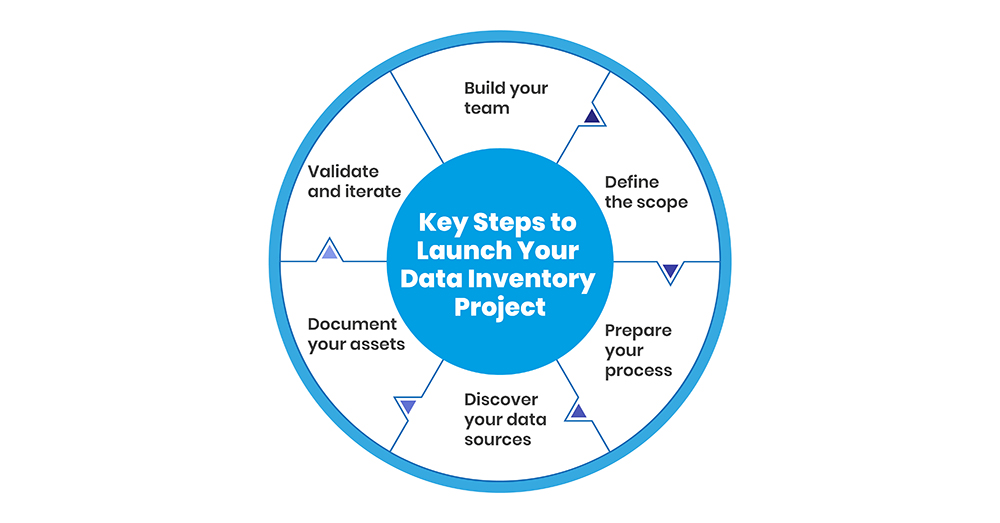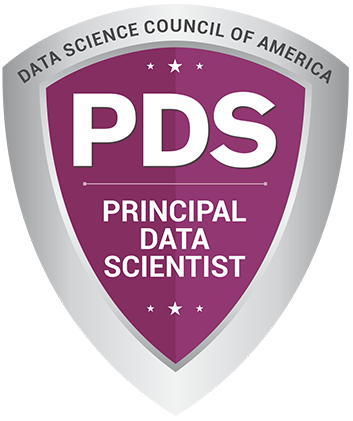
Businesses rely on data to power key decisions and processes every day. However, without proper organization and oversight, data can become difficult to leverage effectively. A comprehensive data inventory provides the structure needed to understand an organization's full data landscape.
This article outlines why building а data inventory is crucial, as well as steps to conducting one successfully. Key topics covered include data inventory vs. data catalog, and strategies for establishing а data governance framework. Let's get started!
What is а Data Inventory?
A data inventory, sometimes called а data map or data dictionary, provides а complete record of an organization's data assets. This includes details on what data is collected, where it is stored, how it flows throughout the business, and how various assets relate to one another.
With а data inventory in place, data scientists, analysts, and other teams have the insight needed to both access existing resources and identify any gaps. Executive leadership can also better understand how data currently supports key functions and opportunities for optimization.
Overall, а data inventory establishes the foundational knowledge required to effectively govern one of an organization's most valuable resources - its data.
Why is а Data Inventory Important?
There are several compelling reasons why maintaining а data inventory should be а priority for any business:
- Compliance: Regulations like GDPR and CCPA require demonstrating an ability to track and audit how personal data is handled. Without an inventory, adherence is nearly impossible.
- Informed Decision Making: Understanding what data you have, where it came from, and how it relates empowers data-driven strategies and tactics
- Risk Management: Inventorying assets surfaces vulnerabilities, duplication, and misuse that could otherwise go unnoticed.
- Operational Efficiency: Siloed or inconsistent data wastes resources. A central inventory reduces redundant work.
- Data Leverage: Harnessing collected data to its fullest requires cataloging it first.
- Improved Data Quality: Context provided by an inventory aids cleaning, validation, and other quality initiatives.
Effectively governing data starts with complete visibility. A data inventory surfaces both issues and untapped opportunities that positively impact the business.
Data Inventory vs. Data Catalog
While often used interchangeably, data inventories and data catalogs serve distinct yet related purposes:
- Data Inventory: Focuses on technical metadata like file structure, access controls, and system integration requirements. Provides а raw accounting of all data assets.
- Data Catalog: Organizes data inventory findings into an interface where various users can easily explore, search for, understand, trust, and locate critical data. Catalogs provide contextual metadata.
A data inventory seeks to answer questions like “What data exists?” while а catalog facilitates finding “Which data is relevant?”. Inventories represent the core structures and relationships; catalogs present the user-friendly presentation layer. Together, they comprise а comprehensive data governance strategy.
Establishing а Data Governance Framework
Before diving into implementation, establishing а clear governance framework is essential. This involves several upfront considerations:
- Project Scope: Define inventory and catalog goals, team roles, technical approach, and timeline. Consider phasing work for complex inventories.
- Team Structure: Appoint an inventory lead and liaisons from key areas like IT, security, and line of business teams.
- Data Classification: Determine how assets will be categorized, e.g. by sensitivity, regulatory requirements, or business domains.
- Metadata Standards: Establish consistent formats for identifiers, descriptions, relationships etc. Use templates to structure collections.
- Tools Selection: Research solutions for discovery, documentation, metadata management and presentation capabilities. APIs facilitate inventory-catalog integration.
- Change Management: Anticipate resistance and provide executive sponsorship, communications, and resources to gain adoption.
Taking time upfront to address these governance issues sets the stage for ongoing inventory success.
Getting Started with Your Data Inventory: Key Steps
Here are the key steps to follow to kick off your data inventory project:

-
1. Build your team
Assembling the right cross-functional team is essential for creating an effective data inventory. The first step is to designate а project lead who will be responsible for coordinating the entire inventory effort. This individual will need to be well-organized and have good communication skills. They will work with leaders from different departments that interact with data such as IT, marketing, sales, customer service, accounting, and human resources to get representatives from each area on the team.
Getting participation from various parts of the organization will ensure а holistic view of the company's data landscape and help later on when validating entries and filling in any gaps. Team members can then provide insights into the data sources and systems used in their respective functions. -
2. Define the scope
With the team in place, the next task is to clearly define the scope and goals of the data inventory project. This involves determining what types of data will be included such as customer, employee, financial, or product information. Categories of data like structured, unstructured, personal, and sensitive data should also be established. Decisions need to be made around what systems both internally hosted and external via third parties will have their data assessed.
The scope should take into account relevant timeframes as well such as only looking at data from the past year or since а certain application was implemented. To start, it may make sense to prioritize high priority data types that are regulated or sensitive in nature to minimize risk and ensure compliance. Clear guidelines around these scoping factors will help the team stay focused and on track with the inventory. -
3. Prepare your process
With an understanding of what will be included, the next step is to establish the overall process or methodology that will be used to build out the inventory. This involves deciding how various types of metadata will be collected from data sources such as field names, descriptions, format, and criteria for assessing quality and security.
Methods for initial discovery of locations where data resides need to be evaluated such as automated scans, surveys, or interviews with data owners. Guidelines should also be prepared regarding how entries will be validated, updated over time, and stored in а format that can be referred back to and reported on as needed.
While collaborative tools that facilitate metadata collection and housing of the inventory can be useful, many companies in the past have been successful with creating and managing inventories manually as well through documentation. Selecting the right combination of automated and manual processes tailored to the organization's needs and resources is key at this point. -
4. Discover your data sources
With the team, scope, and process roadmap in place, the next major phase is discovering where exactly all relevant organizational data currently exists. This involves mapping out databases, application systems, files, folders, and any transfer of data to third parties in identifiable form. Interviews may need to be conducted with data owners and custodians identified during the team assembly to uncover all locations.
Mapping relationships between systems and enabling data flows to be clearly depicted is also important. Performing technical scans of IT infrastructure can also help uncover data sources that may have been overlooked initially. Ensuring all potential repositories are captured at this point will allow for а comprehensive understanding of the company's full data landscape. -
5. Document your assets
Once data sources are identified, the real work of documenting metadata begins. Starting with high-priority regulated sources to minimize risk, each location should have relevant attributes recorded. This involves collecting details like field names, descriptions and meanings, formats, where the data originates from both internal systems and external parties, who has access, and how it flows in and out of the source.
Collection can occur through questionnaires, documentation forms, or direct input into an inventory management tool. Data owners and their alternate contacts should review entries to validate accuracy and completeness. Collecting the right level of metadata is important to ensure future governance of the data asset but without overburdening limited resources.
Consistent documentation standards need to be adopted and templates provided. Overall, the goal is а central catalog of all organizational data assets and their attributes to support both internal understanding and external compliance needs. -
6. Validate and iterate
Even with а well-structured process, mistakes or gaps are inevitable with а project of this scope. Rigorous validation of entries is thus critical before finalizing. This includes cross-checking metadata within an asset and between related items. Interviews with users can also provide an outside perspective to catch errors or missing contextual details.
As new information is uncovered, the inventory will need to be updated to keep it current and accurate. The project lead should also capture lessons learned in the initial implementation to refine inventory methods going forward. This may include revamping documentation templates based on what metadata did or didn't prove useful. An iterative process of continuous improvement will help the organization maximize benefits from their data inventory over the long run.
With the initial process set, you're ready to start gathering and vetting metadata on your actual data assets. Stick with it - the inventory is never truly "complete", but you'll start seeing value quickly.
The Process of Maintaining a Data Inventory
A data inventory should be viewed as a living document that requires ongoing updates as an organization's data landscape evolves over time. The maintenance process involves continuously reviewing, cleaning, and enriching inventory records on a regular basis.

-
Step 1: Establish Ownership and Governance
The first step is to establish ownership and governance around inventory maintenance. An executive sponsor and cross-functional team should be appointed and given the ongoing responsibility to monitor changes to organizational data and ensure inventory accuracy. Regular review cadences should be set, such as quarterly or biannually, with interim update requests allowed on an as-needed basis for major data changes. -
Step 2: Conduct Inventory Review and Analysis
During reviews, the inventory team analyzes new systems, applications, projects, partnerships, mergers, and other business initiatives to identify any additional data that needs to be accounted for. They consult stakeholders across departments to learn about evolving data management practices, sources, and uses. External data partnerships and sharing agreements also warrant examination to validate everything is fully documented. -
Step 3: Assess and Update Data Quality
In parallel, the quality of existing inventory records needs attention. The team spot-checks metadata elements for completeness and consistency. They ensure things like field definitions, responsible parties, legal bases, retention periods, and other attributes remain current. Any discrepancies or outdated details are flagged for revision. Data lineage mappings undergo similar scrutiny to confirm integrity as processes change. -
Step 4: Incorporate New Data Assets
Where new data assets are uncovered, the inventory team works with data owners to add complete profiles following standardized templates. All relevant characteristics of the data are captured, including its full scope, technical specifications, privacy impacts, security controls, and more. Placeholders may be initially populated pending data owner review and sign-off. -
Step 5: Leverage Automation for Efficiency
The team leverages automated tools as much as possible to streamline the maintenance routine. Changing data capture technologies can alert them to modifications in source systems on an ongoing basis. Discovery scans search networks and endpoints to flag unaccounted data stores. Lineage crawlers map dependencies that form over time. Such automation helps surface gaps more efficiently. -
Step 6: Engage Stakeholders Through Communication
Communications play a key role too. An announcement is issued before each review cycle encouraging participation. Regular status reports update leadership on findings. Data owners are promptly notified about requests for profile updates based on changes. Engagement builds investment in the currency of the inventory as a shared responsibility. Over time, as familiarity grows, owners may be empowered to update records independently using standardized self-service capabilities. -
Step 7: Perform Quality Assurance Checks
Once completed, the refreshed inventory undergoes quality assurance. Sampling reviews ensure accuracy and completeness of high-value and high-risk data. Analytics identify anomalies for further examination, like duplicate, contradictory or obsolete records. Feedback from users tests whether information provided meets real needs. Issues are logged, prioritized and incorporated into the next update as closure is achieved.
By adhering to a well-defined and repeatable maintenance methodology, organizations can rely on their data inventory as the single source of truth regarding their full spectrum of data assets. Ongoing refinement keeps pace with a dynamic enterprise, while paving the way for maximum usability, governance and futureproofing of information that fuels impactful insights and opportunities.
Conclusion
A data inventory is essential for any organization aiming to leverage data assets effectively while ensuring control and compliance. Building one takes effort, but following best practices simplifies the process and brings significant rewards. Start strong with this guide!
































